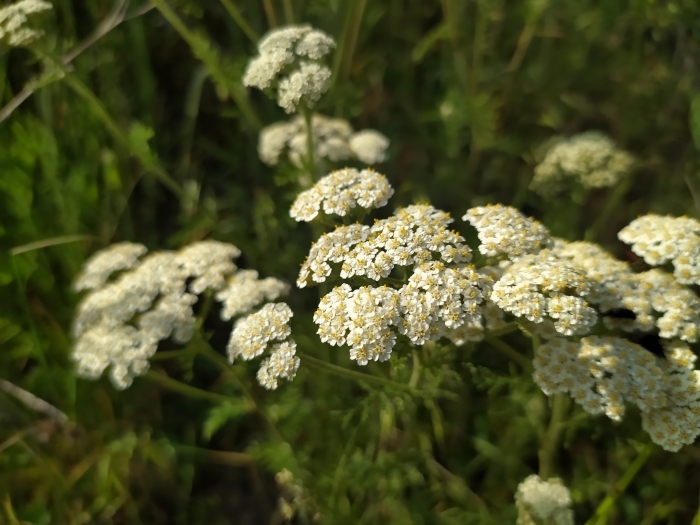Noble Yarrow
(Achillea nobilis)
Noble Yarrow (Achillea nobilis)
/
/

arthur_haendler
CC BY 4.0
Image By:
arthur_haendler
Recorded By:
Copyright:
CC BY 4.0
Copyright Notice:
Photo by: arthur_haendler | License Type: CC BY 4.0 | License URL: http://creativecommons.org/licenses/by/4.0/ | Rights Holder: arthur_haendler | Publisher: iNaturalist | Date Created: 2023-05-29T16:50:21-07:00 |

























Estimated Native Range
Summary
Achillea nobilis, commonly known as noble yarrow, is a perennial herb native to a variety of habitats including meadows, grasslands, and open woodlands across Eurasia. It is widespread across most of Europe, excluding Scandinavia and the British Isles, and extends to Turkey, the Caucasus, and Central Asia. It has also become naturalized in North America and other regions. Noble yarrow typically forms a low-growing clump of medium green, fern-like foliage, reaching up to 30 inches in height. Its flowering stems are topped with flat clusters of creamy-white or yellow flowers that bloom in late spring to early summer. The plant’s foliage and stems are characteristically covered with soft hairs.
Noble yarrow is valued for its drought tolerance and ability to thrive in poor soils, making it a suitable choice for xeriscaping and rock gardens. Its flowers are not as showy as some other yarrow species, but they still attract pollinators such as bees and butterflies. In cultivation, it prefers full sun to part shade and well-drained soil. It is often used in borders, wildflower meadows, and as a ground cover. While generally low-maintenance, Achillea nobilis can be susceptible to powdery mildew and rust, especially in humid conditions. It is also important to note that, when grown outside its native range, it can become invasive and outcompete local flora.CC BY-SA 4.0
Noble yarrow is valued for its drought tolerance and ability to thrive in poor soils, making it a suitable choice for xeriscaping and rock gardens. Its flowers are not as showy as some other yarrow species, but they still attract pollinators such as bees and butterflies. In cultivation, it prefers full sun to part shade and well-drained soil. It is often used in borders, wildflower meadows, and as a ground cover. While generally low-maintenance, Achillea nobilis can be susceptible to powdery mildew and rust, especially in humid conditions. It is also important to note that, when grown outside its native range, it can become invasive and outcompete local flora.CC BY-SA 4.0
Plant Description
- Plant Type: Herb
- Height: 0.75-1 feet
- Width: 0.75-1.25 feet
- Growth Rate: Moderate
- Flower Color: White, Yellow
- Flowering Season: Spring, Summer
- Leaf Retention: Deciduous, Semi-deciduous
Growth Requirements
- Sun: Full Sun, Part Shade
- Water: Low, Medium
- Drainage: Fast, Medium
Common Uses
Border Plant, Butterfly Garden, Deer Resistant, Drought Tolerant, Groundcover, Low Maintenance, Rabbit Resistant
Natural Habitat
Meadows, grasslands, and open woodlands across Eurasia
Other Names
Common Names: Fernleaf Yarrow
Scientific Names: , Achillea nobilis, Achillea debreceniensis, Achillea grata, Achillea nobilis f. nobilis, Achillea nobilis var. nobilis, Achillea punctata, Achillea subnobilis,
GBIF Accepted Name: